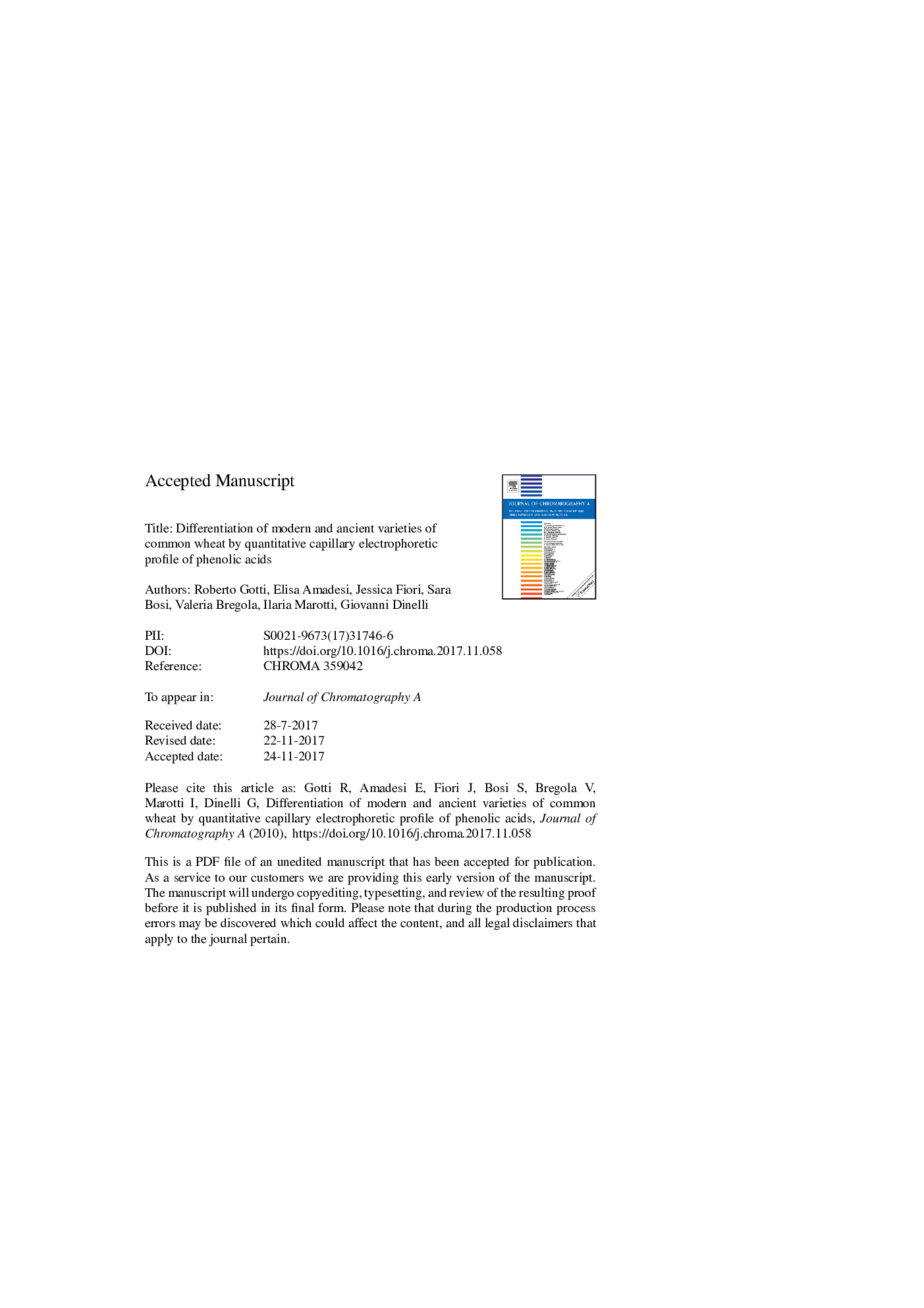| Article ID | Journal | Published Year | Pages | File Type |
|---|---|---|---|---|
| 7609266 | Journal of Chromatography A | 2018 | 24 Pages |
Abstract
Phenolic compounds have received great attention among the health promoting phytochemicals in common wheat (Triticum aestivum L.), mainly because of their strong antioxidant properties. In the present study a simple Capillary Zone Electrophoresis (CZE) method with UV detection was optimized and validated for the quantitation of six of the most important phenolic acids in whole grain i.e., sinapic, ferulic, syringic, p-coumaric, vanillic and p-hydroxybenzoic acid. The separation was achieved in a running buffer composed of sodium phosphate solution (50âmM) in water/methanol 80:20 (v/v) at pH 6.0 and using a fused-silica capillary at the temperature of 30â°C under application of 27âkV. By means of diode array detector, and made possible by the favorable characteristic UV spectra, the quantitation of the solutes was carried out at 200, 220 and 300ânm, in the complex matrices represented by the soluble and bound fractions of wheat flours. The validation parameters of the method i.e., linearity, sensitivity, precision, accuracy and robustness were in line with those obtained by consolidated separation techniques applied for the same purposes (e.g., HPLC-UV), with a significant advantage in term of analysis time (less than 12âmin). Ten varieties of soft wheat (five modern Italian and five old Italian genotypes) were analysed and the data were subjected to Principal Components Analysis (PCA). Interestingly, significant differences of the quantitative phenolic acids profile were observed between the modern and the ancient genotypes, with the latter showing higher amount of the main represented phenolic acids.
Related Topics
Physical Sciences and Engineering
Chemistry
Analytical Chemistry
Authors
Roberto Gotti, Elisa Amadesi, Jessica Fiori, Sara Bosi, Valeria Bregola, Ilaria Marotti, Giovanni Dinelli,
